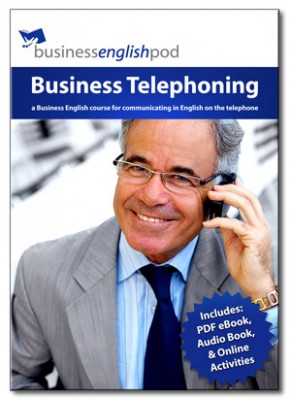Learn business English with your favorite business English lessons from Business English Pod!
Business English Pod
With over 75 million lessons delivered since 2006, Business English Pod is the go-to source for Business English lessons, podcasts and mobile apps for intermediate and advanced Business English learners.
Learn English conversation and listening skills, business vocabulary, idioms, and more, with effective business English lessons on everything from meetings, presentations, negotiations to sales, job interviews and finance. Our Business English lessons are designed to help you understand the language that we use to communicate and the reasons why we use it. Our goal is to teach natural and effective English for business.
Our Business English Pod lessons (BEP) include a natural dialog featuring common and effective business English vocabulary, idioms, and phrases. It also includes a clear and complete explanation of the dialog. You will learn what the speakers are saying, why they are saying it, and other ways you can express the same ideas. The PDF transcript and practice exercises will help you understand and remember everything you learn in the podcast.
PDF transcripts for each lesson are available to premium members. Premium members can also access our online quizzes and lesson modules – take a free trial to preview the lesson resources.
Business English Pod publishes a variety of business English lessons for speaking, vocabulary and listening skills. Try Video Vocab to learn business English vocabulary for different business and technical topics. Listen to Skills 360 for advice on everything from using the telephone to high-level negotiations. Tune in to Business English News to learn advanced English vocabulary. And use our core Business English Pod lessons to study business English conversations, English speaking skills, and English vocabulary and idioms.
Our Business English lessons are designed to help you understand the language that we use to communicate and the reasons why we use it. We want our learners to be able to face different business and work situations with confidence in their English abilities.
Business English Pod lessons are carefully created by an expert team of trainers with over 50 years of frontline experience in Business English training. Our developers have worked with some of the world’s leading companies in a variety of fields including engineering, telecommunications, aerospace, financial services, and medicine. We don’t just understand English, we understand how to use English effectively for business.
Learning Process
Business English Pod lessons follow a consistent and effective format. Each podcast begins with an introduction that tells you about the topic and situation for the dialog. Then you hear the dialog, which is a natural and realistic example of a conversation in a common business situation. Then, in the “debrief” section, a teacher reviews each part of the dialog and explains what the speakers are saying, why they are saying it, and other ways to express similar ideas. Finally, in the “practice” section, you have the chance to use the language you learned.
Business English Pod is aimed at intermediate and advanced English learners, with a TOEIC score of between 400 and 700 or CEF B1-C2. However, the lessons are designed to be useful to learners at a variety of levels. Lower and intermediate learners can focus more on language development, and advanced learners can concentrate on skills, fluency, and enhancement of professionalism.






